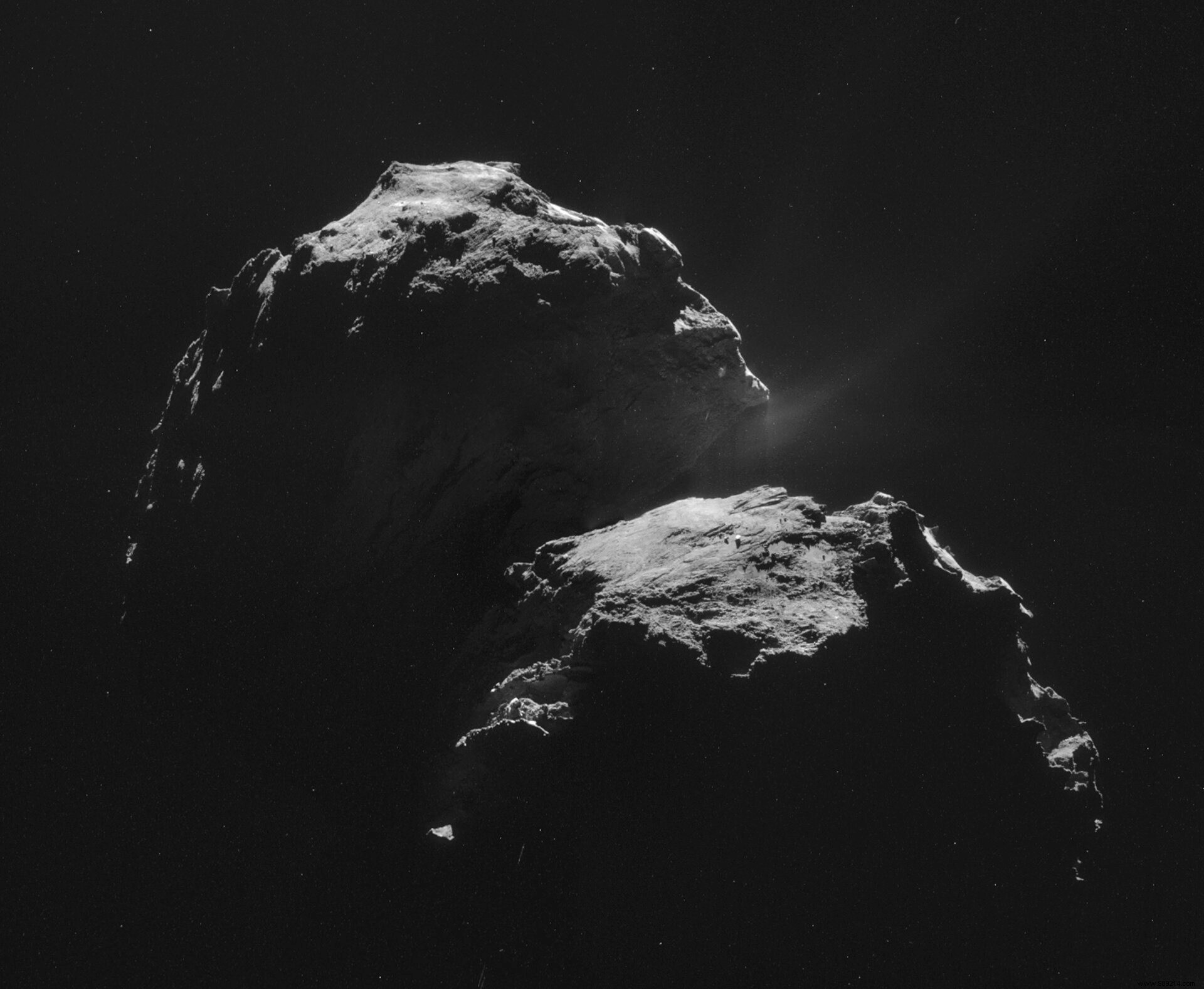Comet 67P, nicknamed “Tchouri” has just approached Earth like never before. The object is now moving away from the sun with two former passengers of human origin on board.
Discovered in 1969, comet 67P/Tchourioumov-Guérassimenkoa, nicknamed "Tchouri", made its closest approach to Earth on the night of Friday November 12 to Saturday 13 November, around 1:50 a.m. (French time). Integrated into the Martian orbit, the comet was indeed positioned 62.8 million kilometers from our planet . Nine days earlier, the comet passed perihelion, the closest point to the sun in its elliptical orbit around our star. At this point, the comet was about 181 million kilometers from the sun.
The object, which is still bright enough to be observed with amateur telescopes, is now receding. Will he come back? The answer is yes, of course. On the other hand, you will probably no longer be of this world. Indeed, this celestial snowball will not make another close passage until the year 2214, that is to say in a little less than two hundred years .
If you want to watch it, now is the time! You will find it near Pollux, the brightest star in the constellation Gemini.

"Tchouri" was brought to light by the European Space Agency's Rosetta probe. Launched on March 2, 2004, the ship had reached its target on August 6, 2014, after a journey of ten years and more than 500 million kilometers traveled. The probe then released its lander, Philae, on November 12, 2014. At the time, its instruments sent the first images ever obtained from the surface of a comet.

However, this landing did not go through without a hitch. During the first landing, Philae had indeed bounced twice before missing the area chosen by the scientists. The crash was later attributed to the failure of two harpoons designed to hook the lander to the comet during first contact.
From his vantage point, under a cliff, Philae couldn't see the sun. After two days, the probe had therefore run out of power before "falling asleep". It then briefly "woke up" in June 2015 when the comet's angle to the sun shifted.
Meanwhile, Rosetta had been closely circling the comet for more than two and a half years, having made detailed measurements and observations of the surface and its immediate surroundings. . At the end of its mission, the probe had finally crashed on the surface of the comet.
Despite some failures, the Rosetta and Philae mission still makes comet 67P the best-studied comet . The data collected during this incredible mission is still being studied.